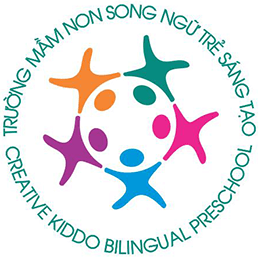It can be a fictional character or even something that is now trying to mimic a human – let it be the personality that will make the right impression for your specific users. If the CUI platform finds the user’s request vague and can’t convert it into an actionable parameter, it will ask follow-up questions. It will drastically widen the scope of conversational technologies, making it more adaptable to different channels and enterprises. Less effort required for CUI will result in better convenience for users, which is perhaps the ultimate goal. A CUI can provide updates on purchases, billing, shipping, address customer questions, navigate through the websites or apps, offer products or service information, along with many other use cases.
Meeting summaries are a hot new workplace task for AI – Emerging Tech Brew
Meeting summaries are a hot new workplace task for AI.
Posted: Wed, 07 Jun 2023 15:36:34 GMT [source]
You can work it out as a percentage of correct responses out of hundreds or thousands of user interactions. If a chatbot answer does not match the expected, pre-defined answer, you may consider it to be incorrect. However, be sure to take into account reliable/actionable output that may deviate slightly from an anticipated response. As Star’s UX Design Lead, Oleksii Tymokhovskyi has designed user-centric products across Star’s AdTech and HealthTech industries both for B2B and B2C for over 3 years. Oleksii puts his 10 years of UX experience to help our partners focus their vision through the prism of user experience, practice a lean approach and leverage business value by design. We are applying the same tools and technologies to healthcare to create better experiences for all stakeholders.
Discover content
CUI is a perfect option when users are driving or operating equipment. Users can ask a voice assistant for any information that can be found on their smartphones, the internet, or in compatible apps. Depending on the type of voice system and how advanced it is, it may require specific actions, prompts or keywords to activate. The more products and services are connected to the system, the more complex and versatile the assistant becomes.
If you’re an iOS user, you’ll likely be familiar with the voice assistant Siri. Additionally, Google and Microsoft both have popular voice assistants that are included on mobile devices and home voice devices. HiTech advancements have led to the rise of conversational interfaces. While this technology is still far from perfect, conversational interfaces have gotten very popular in consumer devices over the last five years. You might not necessarily know what a conversational interface is, but chances are you have interacted with one.
What is a Conversational User Interface (CUI)?
We can expect even more sophisticated chatbots that can understand and respond to emotions, adapt to individual preferences, and provide personalized recommendations. The integration of AI with other emerging technologies, such as augmented reality and virtual reality, may further enhance the immersive and lifelike nature of these conversational interfaces. The future may also see the development of ethical guidelines and regulations to ensure the responsible and beneficial use of sexy AI chat. To ensure the success and acceptance of sexy AI chat, continuous user feedback and adaptation are vital. Understanding user preferences, collecting feedback on conversational experiences, and implementing improvements based on user input will be crucial to refining these chatbots over time. By involving users in the development process, the chatbots can become more aligned with user expectations and deliver more satisfying interactions.
- The incomplete nature of conversational interface development also requires human supervision if the goal is developing a fully functioning system.
- Anything more than three lines of text seemed to activate the tl;dr (too long; didn’t read) response in users.
- Over the years, Lark and its conversational user interface have received a few achievements.
- Conventional testing methodologies and tools fall short if they were to be used without appropriate modification for AI-infused conversational tools such as Chatbots.
- CUIs are essentially a built-in personal assistant within existing digital products and services.
- If you are interested in designing chatbot UI from scratch, you should use a UI mockup tool such as Figma, MockFlow, or Zeplin.
And, thanks to two new variables – last response and last utterance – you can now take advantage of prompt chaining, giving the illusion of a constant dynamic conversation. Structure the questions in such a way that it would be easier to analyze and provide insights. This can be implemented through multiple choice questions or yes/no type of questions.
Healthcare Industry
We’re also seeing the mass implementation of chatbots for business and customer support. In 2021, about 88% of web users chatted with chatbots, and most of them found the experience positive. Nowadays, chatbot interfaces are more user-friendly than ever before. While they are still based on messages, there are many graphical components of modern chatbot user interfaces. Building a bot has gotten easier down the years thanks to open-source sharing of the underlying codes, but the problem is creating a useful one. It would take considerably long time to develop one due to the difficulty of integrating different data sources (i.e. CRM software or e-commerce platform) to achieve superior quality.
Conversational User Interfaces (CUI) facilitate a natural human conversation between humans and machines. The conversational user interface design needs to generate the best customer experience possible to show metadialog.com users the huge chatbot’s potential. Every detail in conversational UI/UX should be considered to mitigate the skepticism of those customers whose initial experience was corrupted by a low-quality chatbot.
For Developers
In case you aren’t sure your chatbot is trained enough to handle complex requests, think of limiting the options it can help with. A Conversational UI gives the privilege of interacting with the computer on human terms. It is a paradigm shift from the earlier communications achieved either by entering syntax-specific commands or clicking icons.
- The question is not if but when your business will adopt Conversational User Interfaces.
- Also, it is a good practice not to allow users to type much and get as much information from the system.
- It helps people in reducing weight and also focuses on reducing stress and anxiety among people.
- Likewise, a bot created this way is prone to logical and grammatical mistakes based on the user input it receives over time.
- Chatbots are automated software programmed to communicate with humans via messages.
- The single best advantage of this chatbot interface is that it’s highly customizable.
The problem is that natural language is compositional, while slots-and-intents frameworks are not. In practice, this leads to conversational agents that are narrowly focused and easily confused. As the number of mobile apps increases, while the size of our mobile screens decreases, we’re reaching the limits of the mobile “OS + apps” paradigm. It’s getting harder to download, setup, manage and switch between multiple apps on our mobile device and most mobile users only use a handful of apps every day. As an alternative, messaging apps are becoming the new platform, subsuming the role played by the mobile operating system.
Revolutionize Your Business with Photon’s AI Services
This contextual sorcery adds depth and intelligence to our interactions, making voice assistants feel like attentive and perceptive conversational partners. Voice assistants have embraced their own personalities, transcending the realm of mere digital tools. From the witty responses of Siri to the calm and knowledgeable demeanor of Alexa, these AI companions have cultivated distinct personas. They have become our virtual friends, engaging in conversations, telling jokes, and even playing along with our whimsical requests.
- By the time the App Store opened for business in July 2008, approximately 6 million people worldwide owned an iPhone.
- 90% of client inquiries were fully automated as a result of the initiative, which limited employee involvement to the resolution of critical customer problems only.
- The same approach will work for conversational interface design as well.
- The main purpose is to eliminate the feeling that you are talking to a machine instead of a human being.
- Many of these platforms are rushing to break into the market and boost sales but are making some basic mistakes in the process.
- One of the strongest selling points of conversational interfaces is their ability to be there 24/7.
E-commerce platforms can utilize sexy AI chat to provide personalized product recommendations, answer customer inquiries, and offer a more engaging shopping experience. Similarly, industries such as healthcare and education can leverage these chatbots to deliver more interactive and informative services. Sexy AI chat represents just one facet of the future of conversational interfaces. As technology continues to evolve, we can expect further advancements in AI, natural language processing, and emotional intelligence. These developments will likely result in even more immersive and sophisticated conversational experiences, bringing us closer to seamless human-machine interactions. Whether you love them or hate them, conversational interfaces have started making a significant impact in communication.
WHO chatbot
The existence of a revision operator, combined with the fact that users speak intensionally, also means that users are able to tweak and build upon what they’ve already said. Early AI researchers envisioned a world where knowledge had a singular representation and a singular repository. Instead, we live in a world where data, and the ability to interpret it, is fragmented and diffuse. As a result, our constraint solver must be unusually extensible, allowing developers to compose it with their own systems and domain expertise. The resolver, then, must translate the predicate into one or more queries to back-end services that provide information about people. To do that, we must stop thinking of it as a predicate and start thinking of it as a constraint.

However, the problems happen when people alter their natural language in the heat of aspiration to help bots better understand them. A set of rules predetermines their interaction with customers and gives no space for improvisation. However, this type of bots is less expensive and easier to integrate into the various systems. The more detailed algorithm a chatbot has on the backend, the better the communication experience a user ultimately receives. They have all set up conversation-based interfaces powered by the AI chatbots that have come good to serve several business purposes. Yesterday, customer responses were a phone call or a web-search away.
Collaboration with Conversational AI Assistants for UX Evaluation: Questions and How to Ask them (Voice vs. Text)
Only the domain developer building atop the dialogue system understands the capabilities and costs of their back-end services. The query API for a service, for example, might offer its own “similar to” operator. Their similarity metric, however, probably won’t reflect that some people use Misha and Mikhail interchangeably. The domain developer will have to maintain a balance between preserving the user’s intent and minimizing the number of requests they make per utterance. The Messenger team recently announced that its first airline partner, KLM Royal Dutch Airlines launched a chatbot.
Their ability to streamline and simplify our daily routines has transformed them into indispensable companions. By casting spells of convenience, voice assistants have become the magical solution to our busy lives, allowing us to accomplish tasks with a flick of the vocal wand. In contrast, Netomi’s conversational platform is powered by deep-learning AI, which learns from real interactions and matures linguistically, almost like a growing child. Incredibly, this allows for progressively easier training and scalability, making it more robust with each new inquiry. It’s understandable that chatbots often get confused with conversational AI.
What are examples of conversational chatbots?
- Slush – Answer FAQs in real time.
- Vainu – Enrich customer conversations without form fill ups.
- Dominos – Deliver a smooth customer experience via Facebook messenger.
- HDFC Bank – Help your customers with instant answers.
